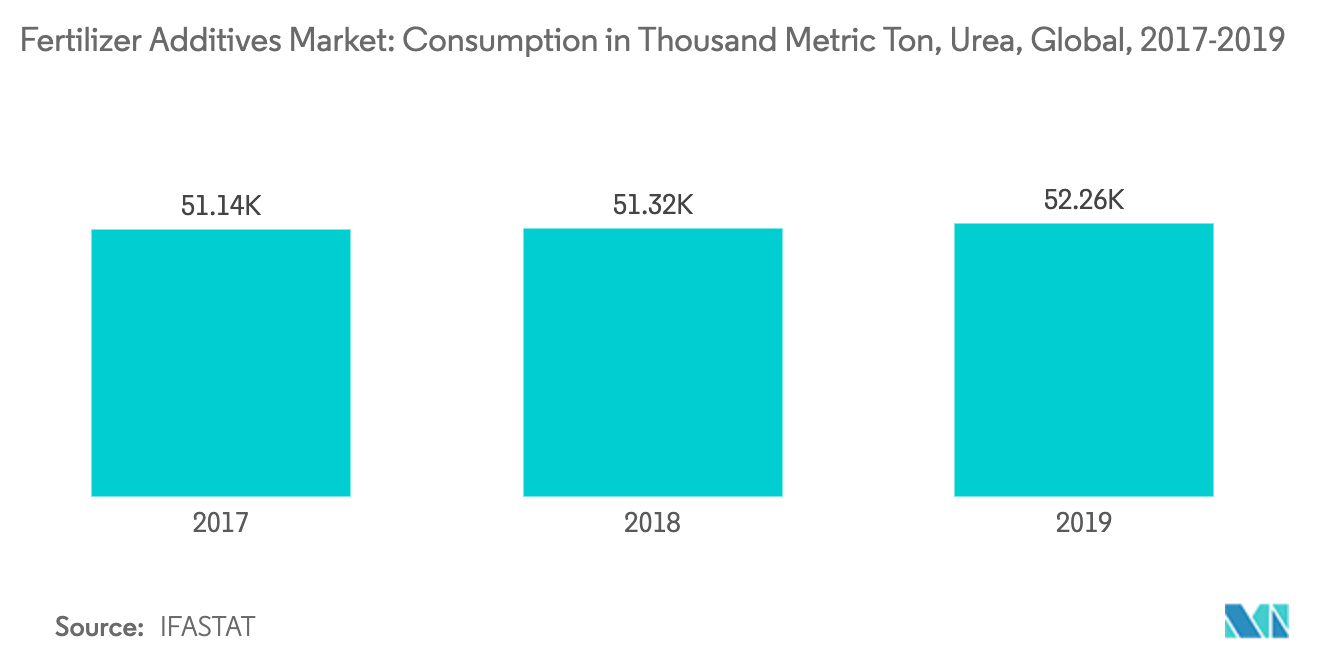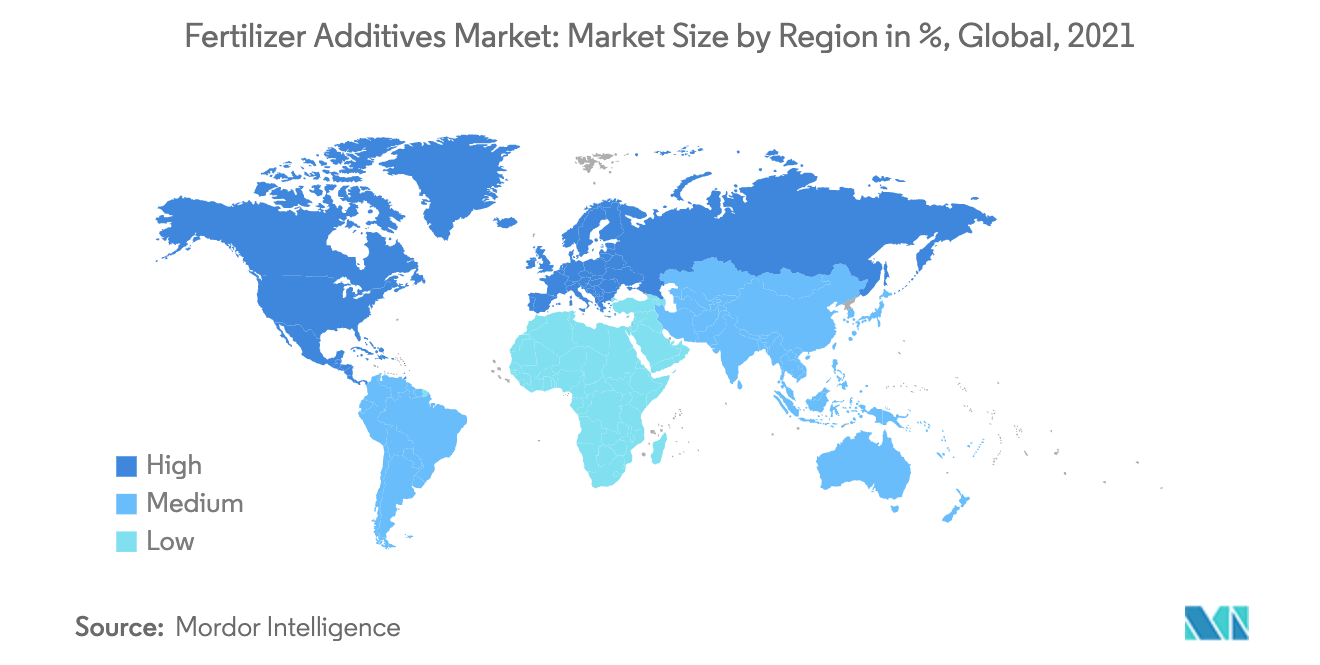Market Trends of Fertilizer Additives Industry
This section covers the major market trends shaping the Fertilizer Additives Market according to our research experts:
Rising Demand for Urea is Driving the Market
The rising demand for urea-based fertilizers around the world is one of the key factors that drive the growth of the market. For instance, according to International Fertilizers Associations (IFASTAT), total global urea consumption was 51,141.0 thousand metric ton in 2017, which increased to 52,258.9 thousand metric ton in 2019. Urea has the highest nitrogen content among all the solid fertilizers and is used widely as a major source of nitrogen for agricultural use. Also, the relative humidity of urea is high, which makes it withstand hot and humid conditions. Therefore, it is preferred to ammonium nitrate and calcium ammonium nitrate (CAN) and also has a rising demand in the market owing to its usage both in solid and liquid form. However, Urea nitrogen can be lost through volatilization, denitrification, and leaching. High N losses of 20-30% of the total N applied fertilizer are observed in humid regions like Brazil, sometimes even higher, reaching up to 60%. As the primary objective of fertilizer additives such as urease inhibitors is to reduce the potential volatilization losses of urea-based fertilizers, the demand for these urea fertilizer additives is increasing. This further accelerates the growth of the fertilizer additive market. Additionally, technological innovations are also augmenting the growth of the market studied. According to a study by Agriculture and Agri-Food Canada, the use of ammonium thiosulphate as a urease inhibitor with the varying surface placement of urea and urea ammonium nitrate in the production of hard red spring wheat under reduced tillage management. TIB Thio ATS, by TIB Chemicals, is one of the popular ammonium thiosulphate inhibitors sold in the North American region.

Asia-Pacific and North America Dominate the Market
Asia-Pacific holds a share of more than half of the global fertilizer additives market. China and India are major consumers of this product owing to the vast agricultural zones in these countries. For instance, according to the World Bank data, in 2016, the fertilizers consumption rate was 165.9 kg per hectare of arable land in India, which increased steadily to 175.0 kg per hectare by 2018. Thus, the rising fertilizer consumption in the region is driving the growth of the market. Among the nitrogenous fertilizers, urea is the most commonly used fertilizer in India, which accounts for more than 80% of total N fertilizer consumption in the country. With the rising concern over N losses through ammonia volatilization and nitrate leaching, fertilizer additives provide an opportunity to reduce losses while enhancing the efficiency of fertilizers applied to the soil. Furthermore, the rising demand for agricultural products in countries like the United States, Canada, and Mexico in the North American region is projected to boost the fertilizer additives market during the forecast period. The United States is the world's fourth-largest producer of nitrogen fertilizers and the second-largest producer of phosphate. As per the State of the Fertilizer Industry Report published by The Fertilizer Institutes, in 2017, 21% of the nitrogen and phosphate fertilizer products in the United States were found to be treated with an inhibitor, polymer, or other controlled release mechanism products for enhanced efficiency. Additionally, the major key players are actively involved in the research and development in order to enhance the quality of fertilizer additives. For instance, in 2019, West Central company launched a new broadcast fertilizer additive, Trivar, powered by Levesol chelating agent that can be added directly to a dry phosphate fertilizer and broadcasted on the field. The additive is designed to maximize phosphate fertilizer by increasing the availability of phosphorus and other key nutrients.


